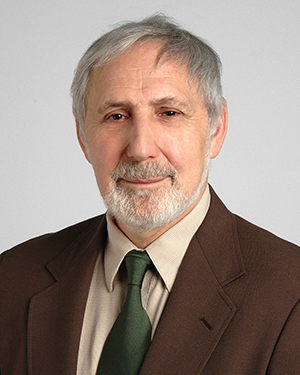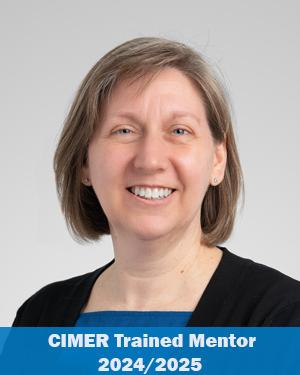Research News
05/02/2025
Persistence pays off for PALA with pan-cancer potential
PALA’s fifty-year journey to a promising multi-cancer treatment highlights the importance of basic science in research.

The emergence of PALA as a promising cancer treatment showcases nearly half a century of hard work and collaboration between Cleveland Clinic's George Stark, PhD and Christine McDonald, PhD.
Dr. Stark laid the initial groundwork for PALA (N-phosphonacetyl-L-aspartate) in the 1970s when he demonstrated its anti-cancer activity. The research recently gained exciting new momentum when his colleague Dr. McDonald discovered in her laboratory that PALA activates the immune system. Since then, further investigation into the new role of PALA as an immune activator has fueled research into its potential applications in several different cancers. This progress showcases the importance of building on initial discoveries with new insights to improve understanding of the systems involved for the benefit of patients.
“Seeing PALA evolve into a treatment with such potential is deeply rewarding,” Dr. Stark says. “We’re ready to take the next steps toward realizing PALA's full impact. The journey ahead is exciting -- not just for us in the lab, but for everyone who believes in the promise of science to transform care.”
What is PALA?
PALA was designed to starve cancer cells by interfering with cell metabolism. The molecule blocks the protein CAD (carbamyl phosphate synthetase, aspartate transcarbamylase, dihydroorotase) from making essential building blocks for the cell. PALA is effective in inhibiting the growth of isolated cancer cells and in pre-clinical models, but the doses needed to starve cancer cells in patients were too high to be tolerated.
Many years after PALA’s initial clinical trials, Dr. McDonald made a startling discovery.
“CAD has this extracurricular immune activity that has nothing to do with metabolism or DNA synthesis,” she says. “CAD also regulates an important immune molecule called NOD2, which plays a critical role in recognizing and fighting pathogens. We are now understanding that NOD2 is important in anti-tumor responses as well.”
Excitingly, the team found that PALA blocked the immune inhibitory action of CAD at doses far lower than needed to starve cells. This means that PALA has the potential to work as an anti-cancer drug at much lower, non-toxic doses.
“At low doses, PALA seems to be an excellent single-agent anti-cancer drug,” Dr. Stark says. “It doesn’t interfere with the metabolism of our healthy cells; it just improves our immune system’s ability to fight the cancer.”
What makes a treatment for one cancer potentially work for others?
Dr. Stark celebrated his 90th birthday with an extraordinary gift: he and Dr. McDonald had developed a topical PALA ointment that successfully treated non-melanoma skin cancer in pre-clinical models. As an added bonus, the PALA ointment generated an effective anti-tumor response without the toxic, blistering side effects commonly associated with current topical treatment options.
Drs. Stark and McDonald are also working with researchers and clinicians across Cleveland Clinic to test the effectiveness of PALA as a treatment for cancer types, both as a topical ointment and by administering it systemically by injection.
“PALA stimulates a very general immune response, like the response generated against bacterial infections. It was only natural for us to ask whether the anti-cancer response was general as well,” Dr. Stark explains.
Several ongoing pre-clinical studies are showing highly promising results, including treatments for:
- Lung cancer
- Breast cancer
- Melanoma
- Pancreatic cancer
“It is not yet clear why this particular immune response works so well against a variety of cancers, and we are actively working to answer this question in the lab,” Dr. Stark says. “In the meantime, we can still figure out how to use PALA even as we work to understand it.”
Further investigation includes using novel delivery methods and examining whether PALA can combine with other currently used cancer therapies, such as chemotherapy or immunotherapy, to effectively tackle the most aggressive forms of cancer. For example, the team is now working to see if the localized immune activation that comes from topical application or injecting PALA into a tumor can generate a general anti-tumor immune response that can inhibit metastatic cancer that has spread elsewhere.
Bringing PALA to patients
Validating their foundational science, Drs. Stark and McDonald launched PALA Pharmaceuticals, Inc and have strategically assembled a C-suite team comprised of seasoned biotech entrepreneurs to accelerate development and drive commercialization. Several patents have been strategically filed to protect PALA's versatile application in cancer therapy, covering both topical and systemic administration routes for broad market potential. The critical next step is securing the funds for early phase clinical trials, to build on their preclinical successes and subsequent transition into clinical care.
Featured Experts
News Category
Related News
Research areas
Want To Support Ground-Breaking Research at Cleveland Clinic?
Discover how you can help Cleveland Clinic save lives and continue to lead the transformation of healthcare.
Give to Cleveland Clinic
